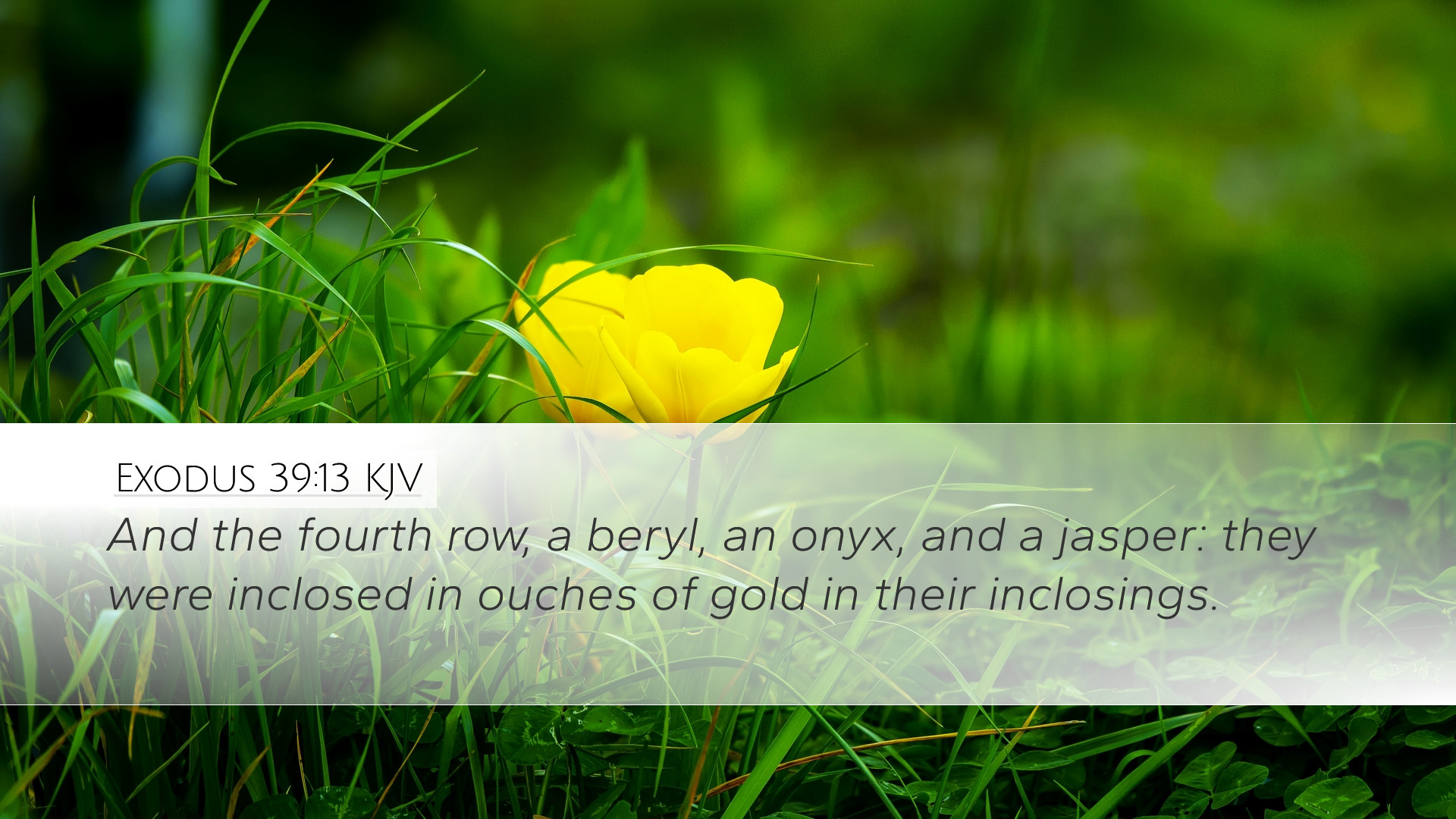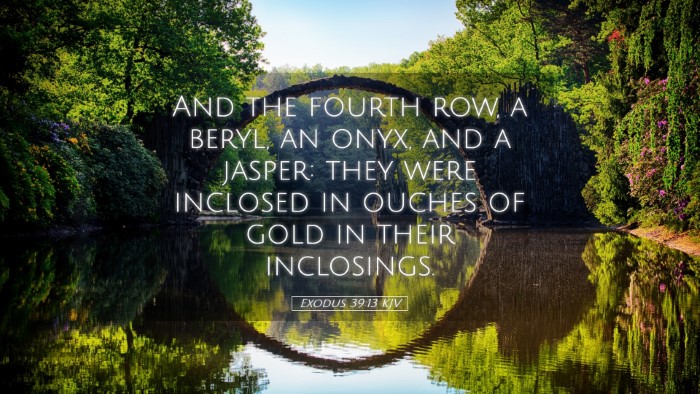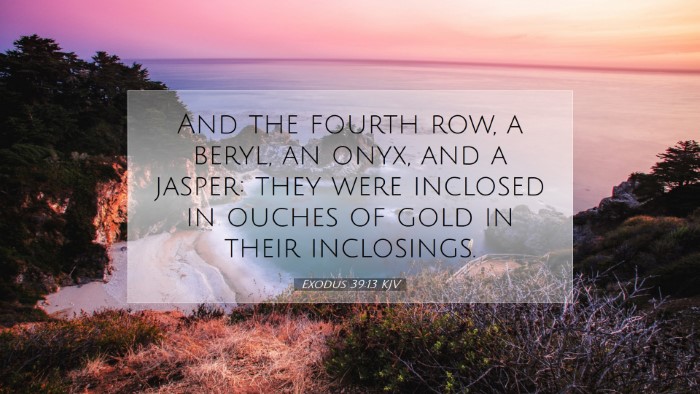Commentary on Exodus 39:13
Verse: "And a chain of pure gold, like a rope, was made for the ephod; they made a gold chain for the ephod." (Exodus 39:13)
Introduction
Exodus 39 marks the culmination of the construction of the tabernacle, detailing the garments of the priests and the sacred items associated with worship. Verse 39:13 specifically addresses the making of a gold chain for the ephod, an essential garment for the high priest. This commentary seeks to explore the significance of this verse through the insights of notable biblical commentators, reflecting on its theological implications and practical application for today’s readers.
Overview of the Ephod
The ephod is a ceremonial garment worn by the high priest, symbolizing his role as an intermediary between God and the people of Israel. The elaboration in materials—such as gold, fine linen, and various colors—reflects the holiness of the priestly office. The gold chain mentioned in this verse emphasizes the importance of the ephod in the priestly attire and its design elements, showcasing the value placed on holiness in service to God.
Insights From Public Domain Commentators
Matthew Henry
Matthew Henry highlights the ornate nature of the ephod and its accompanying decorations, noting that the "chain of pure gold" represents not merely beauty but also the weightiness of the high priest's responsibility. The golden chain can be interpreted as a means of ensuring that the breastplate, which carried the names of the twelve tribes of Israel, remained securely attached, underscoring the notion that the high priest carries the weighty duties of intercession.
Albert Barnes
Albert Barnes emphasizes the practical aspect of the chain's design, likening it to a "rope" that holds significant attachments. He suggests that the gold chain was not just for aesthetics but served a functional purpose in maintaining the integrity of the priestly garments. Barnes contextualizes the high priest's role, portraying it as a divine appointment carrying immense spiritual and communal implications. He encourages readers to perceive the high priest's function as central to the axis of Israel's relationship with God, thus aligning the operational aspects of the chain to its ceremonial aspects.
Adam Clarke
Adam Clarke discusses the historical context of the ephod and its embellishments. He describes the gold chain as an "ornament" that enhances the dignity of the high priest. Clarke notes that the chain, made of "pure gold," represents the purity and preciousness of the high priestly office. He connects the ephod with the idea of divine communication, implying that the high priest through the ephod serves as a link between heaven and earth, thus highlighting the significance of securing the breastplate with the gold chain, which symbolizes unity and connection.
Theological Implications
The making of the gold chain for the ephod speaks volumes about the relationships woven throughout the fabric of Israel's faith—relationships among the people, the priesthood, and their God. The high priest functions in a pivotal role, serving as the mediator who protects and preserves the congregation's covenantal relationship with God. This thread of connection emphasizes that worship and holy service are not lightweight matters; they require the utmost care and detail, reflected in the materials used and the craftsmanship applied.
Lessons for Contemporary Believers
For today’s pastors, students, theologians, and Bible scholars, there are profound lessons drawn from the intricate design of the ephod. The necessity of carefulness in service and worship remains pertinent, encouraging faith communities to approach their sacred tasks with reverence and diligence.
- The Priority of Holiness: Just as the chain is made of pure gold, believers are called to prioritize purity in their own lives and ministries.
- Service as a Sacred Responsibility: Understanding that every aspect of church life and ministry reflects on God's glory will guide leaders in striving for excellence.
- Connection to the Community: The high priest’s role in carrying the names of the tribes indicates the importance of representing the community before God.
Conclusion
Exodus 39:13 encapsulates deeper truths about the nature of worship and service within the community of faith. The imagery of the gold chain alongside the ephod invokes a reminder of the beautiful tension between divine majesty and human responsibility. Pastors and leaders are encouraged to reflect on their roles as mediators who must hold fast to the principles embodied in the high priesthood. Allowing these ancient practices to inform modern worship provides a rich vein for contemporary faith and practice.


